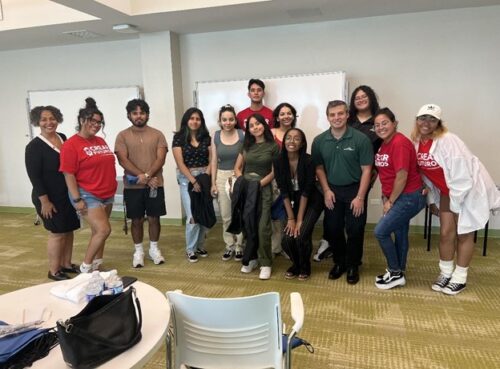Works by Sa’dia Rehman
Amelie A. Wallace Gallery
Until October 16th

“The Living and the Dead” (2019) Photo taken by Jalen Michael
“The Here and the Hereafter” is the latest solo art exhibition at the Amelie A. Wallace Gallery at SUNY Old Westbury. Featuring the works of Sa’dia Rehman, the exhibition showcases about thirty of her recent art pieces that reflects her Pakistani Muslim heritage through contemporary and historical images of objects that not only influence her upbringing but also continues to inspire her today.
Rehman, who identifies herself as a queer artist, was born in Queens. Following the traditions in her culture, she displays most of her works in this exhibit that contain multiple muslim cultural objects. Several pieces make use of an Islamic prayer mat, including her “Far, Far Away from the Path” (2018) piece.
The artist uses a mix of paintings, labor extensive crafting, drawings, and stop-motion animation to reflect the world that continues to inspire her. One of the most mem- orable works that best demonstrates this is “Bul Bul ka Bacha (Nightingale’s Child) A Rhyme” (2016), located on the upper level gallery. This artwork is a grid of text contain- ing an Urdu nursery rhyme that Rehman’s mother would sing to her as a child. She repeatedly writes the rhyme throughout the 27 x 24.5-inch paper using graphite, spray paint, and charcoal. The nursery rhyme itself is about a child who befriends a male nightingale bird. However, an interpretation that can be analyzed through Rehman’s work could explore how she reconfigures the bird’s gender to explore her own sexual identity.

“Contain” (2019) Photo taken by Jalen Michael
I think that’s what I appreciate about the exhibit the most, is how Rehman takes what are seen as conservative views and twists and repurpose them for her interpretations. Even with the Islamic prayer mats, you can see in her “Even the Persians Are Now Showing Signs of Demanding a Constitutional Government” (2019) piece that she cuts and puncture holes in the prayer mats and clothing given to her by her family members. It’s this unorthodox, outside the box thinking that makes her work pop and memorable.
Even if you’re someone like me who usually has a difficult time interpreting someone’s art, just the sheer beauty of the artwork will grab your attention and probably make you invest your time into studying and researching Pakistani Muslim culture.
Rehman has a lot to say with this exhibit. The title itself is something that deserves lengthy conversations, with Rehman wanting to place a focus on exploring living on Earth together as well as the afterlife.
Most of my favorite pieces were located in the upper gallery, with artworks such as “Contain” (2019), “The Living and the Dead” (2019), and “The Here and the Hereafter (Azaadi)” (2019).







